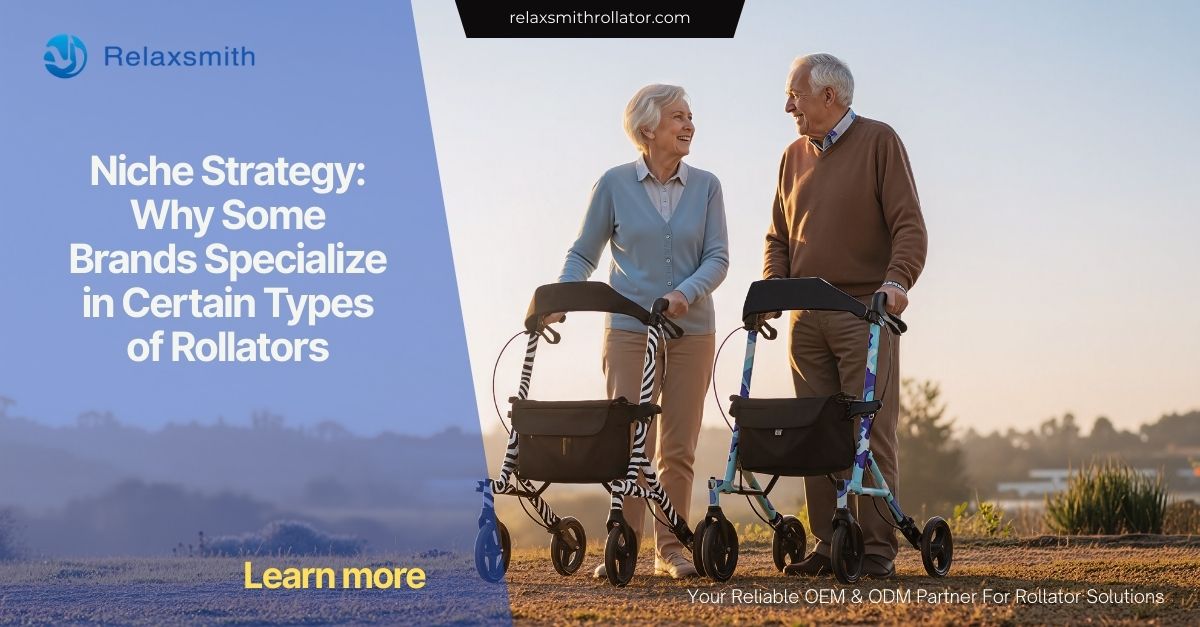Interpreting Certifications & Reviews: Rollator Brand Trust Signals Decoded

In today’s marketplace, many rollator manufacturers advertise safety ratings, quality certifications, and glowing user reviews. But how can product managers and procurement leads distinguish which brands truly deliver? The key lies in knowing which trust signals matter and how to interrogate them. This article guides you through interpreting certifications and reviews so you can judge a rollator brand's reputation for durability and safety with greater confidence.
1. Types of Certifications and Their Weight
Not all certifications are equal. Some involve rigorous testing under standardized conditions, others are more administrative or cosmetic. Examples include ISO 11199‑2, EN 1888, and similar international safety standards. Certifications that cover load testing, resistance to repeated folding, corrosion, braking performance, and stability carry more weight than those that are simply safety or “quality” badges. Procurement should examine what exactly the certification tests—what conditions, what tolerances—to verify whether the certifier did something meaningful. That helps evaluate whether a given certificate supports the rollator brand's reputation for durability and safety.
2. Reading the Fine Print in Safety & Warranty Claims
Many brands make bold claims like “10‑year warranty,” “lifetime durability,” or “meets safety regulation,” but the fine print often limits coverage. Warranty exclusions, usage limits (max user weight, terrain, indoor vs outdoor), and disclaimers about user maintenance can significantly affect real performance. Checking those details gives insight into how serious the brand is about its promises. Procurement teams should request full warranty documents and examine reviews for mentions of issues under conditions similar to your use case.
3. Independent Reviews & Third‑Party Reports
User reviews, published lab test reports, and institutional feedback often reveal strengths and weaknesses that certifications or marketing gloss over. Particular red flags include reports of welds cracking, finishes peeling, brakes failing under load, or frames bending. Also, check consistency: are problems isolated or common across users? These independent signals help validate or challenge a claim. If many users report failure in similar conditions, that may undermine what is claimed. These real user voices are essential to understanding whether a rollator brand's reputation for durability and safety is real.
4. Benchmarking Against Peers
Comparing certifications, warranty, and reviews of several brands side by side can yield insights. Use metrics like load capacity, environmental resistance (humidity, salt air, etc.), number of fold cycles, and feedback on long‑term use. For instance, if Brand A and Brand B both claim ISO compliance but only Brand A provides marine‑coated frames and hundreds of positive reviews for outdoor durability, Brand A may be more trustworthy. These comparative benchmarks permit procurement to choose suppliers with stronger signals.
5. How to Make Certification & Review Signals Part of Procurement Spec
Procurement teams can formalize these trust signals by including specific certification requirements, review thresholds, and sample tested units in their specifications. Require suppliers to provide third‑party lab reports showing durability curves, corrosion resistance, brake life under load, etc. Incorporate user feedback metrics (e.g., returns, complaints) into supplier scorecards. Include clauses that allow rejecting shipments if early units fail reviews or inspections matching claims. Doing this ensures that a brand’s reputation isn’t just a marketing line but backed by verifiable performance.
6. Conclusion
Certifications and reviews are powerful tools—but only when interpreted thoughtfully. For product managers and supply chain leads, distinguishing credible safety signals from superficial ones is key. By focusing on what standards test, reading warranty and performance claims in full, comparing user feedback, and benchmarking peers, you can effectively gauge whether a brand truly fulfills its promise. Asking How can I check a rollator brand's reputation for durability and safety? becomes more than a question—it becomes a framework for trusted decision making and mitigated risk.












